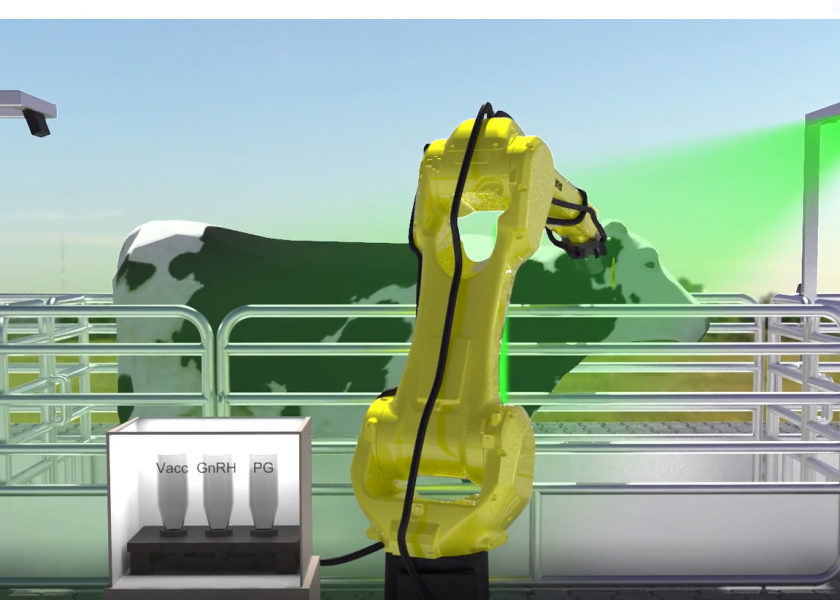Robotic Shot Injection System Under Development For Dairy

If you’re interested in helping dairy clients improve the accuracy and efficiency of their vaccination program and record keeping, you may want to check out an up-and-coming robotic injection system called SureShot. Currently under development by Pharm Robotics, San Jacinto, Calif., the system is being designed to automate the shot delivery and data management process, according to Marinus Dijkstra, CEO, and Alexander (Alika) Chuck, CFO, company co-founders.
The partners say the automated system will reduce the amount of labor required to administer shots, thereby reducing out-of-pocket costs, while improving herd health and production outcomes in the process.
“By automating this tedious process and data management, farmers can be assured that their cows have received the required shot protocol, and they will no longer have to enter the data by hand,” reports Dijkstra.
Chuck says dairy producers can expect financial benefits totaling up to $285 per cow per year from using the technology. The number is based on a savings of $85 per cow from reduced labor costs and up to $200 from improved pregnancy rates and milk output.
How the system will work: As cows leave the milking parlor, they will enter an exit lane with a series of automated gates. As they pass through the gates, an RFID system will track the identification number and medical history of each animal and determine whether she needs a vaccination or reproductive hormone. If not, the gates will remain open to the animal and allow her to pass through. If a shot is needed, the gates will close to keep the animal stationary, and a robotic arm will then administer the required shot in the animal’s neck.
A video demonstrating how SureShot will work, along with other informational resources, is available for viewing at https://wefunder.com/pharmrobotics
A standard training program: Chuck says a multi-phase process will be put into place to help dairy producers introduce and acclimate cows to the system, once installed.
“We anticipate installing the system and robot a couple of weeks ahead of making it operational, so the cows can familiarize themselves with it,” explains Chuck. “We also will provide mock shots initially with a rubber stint touching the cow’s skin and then, once the animal is comfortable, we will switch over to the actual shots.”
Chuck says the robotic injection system will be sold through a series of independent dealers and will retail for a base price of $300,000. Pharm Robotics is working with Siemens to automate and manufacture SureShot.
Pharm Robotics has an equity crowdfunding campaign currently underway, in partnership with Dairy Farmers of America.







